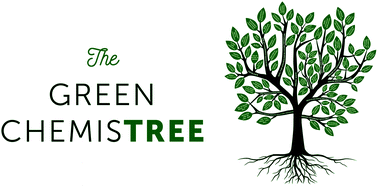Green Chem., 2018, Advance Article
DOI: 10.1039/C8GC00482J, Critical Review
Hanno C. Erythropel, Julie B. Zimmerman, Tamara M. de Winter, Laurene Petitjean, Fjodor Melnikov, Chun Ho Lam, Amanda W. Lounsbury, Karolina E. Mellor, Nina Z. Jankovic, Qingshi Tu, Lauren N. Pincus, Mark M. Falinski, Wenbo Shi, Philip Coish, Desiree L. Plata, Paul T. Anastas
A broad overview of the achievements and emerging areas in the field of Green Chemistry.
The Green ChemisTREE: 20 years after taking root with the 12 principles
Hanno C. Erythropel,ab Julie B. Zimmerman,abc Tamara M. de Winter,ac Laurène Petitjean,ac Fjodor Melnikov,ac Chun Ho Lam,ac Amanda W. Lounsbury,ab Karolina E. Mellor,ac Nina Z. Janković,ab Qingshi Tu,ab Lauren N. Pincus,ac Mark M. Falinski,ab Wenbo Shi,ab Philip Coish,ac Desirée L. Plataab and Paul T. Anastas*abcde
Author affiliations
* Corresponding authors
a Center for Green Chemistry and Green Engineering, Yale University, 370 Prospect Str., New Haven, USA
E-mail: paul.anastas@yale.edu
b Dept. of Chemical and Environmental Engineering, Yale University, 10 Hillhouse Ave., New Haven, USA
c School of Forestry and Environmental Science, Yale University, 195 Prospect Str., New Haven, USA
d Dept. of Chemistry, Yale University, 225 Prospect Str., New Haven, USA
e School of Public Health, Yale University, 60 College Str., New Haven, USA
Abstract
The field of Green Chemistry has seen many scientific discoveries and inventions during the 20 years since the 12 Principles were first published. Inspired by tree diagrams that illustrate diversity of products stemming from raw materials, we present here the Green ChemisTREE as a showcase for the diversity of research and achievements stemming from Green Chemistry. Each branch of the Green ChemisTREE represents one of the 12 Principles, and the leaves represent areas of inquiry and development relevant to that Principle (branch). As such, in this ‘meta-review’, we aim to describe the history and current status of the field of Green Chemistry: by exploring activity within each Principle, by summarizing the benefits of Green Chemistry through robust examples, by discussing tools and metrics available to measure progress towards Green Chemistry, and by outlining knowledge gaps, opportunities, and future challenges for the field.


















 Paul T. Anastas,
Paul T. Anastas,